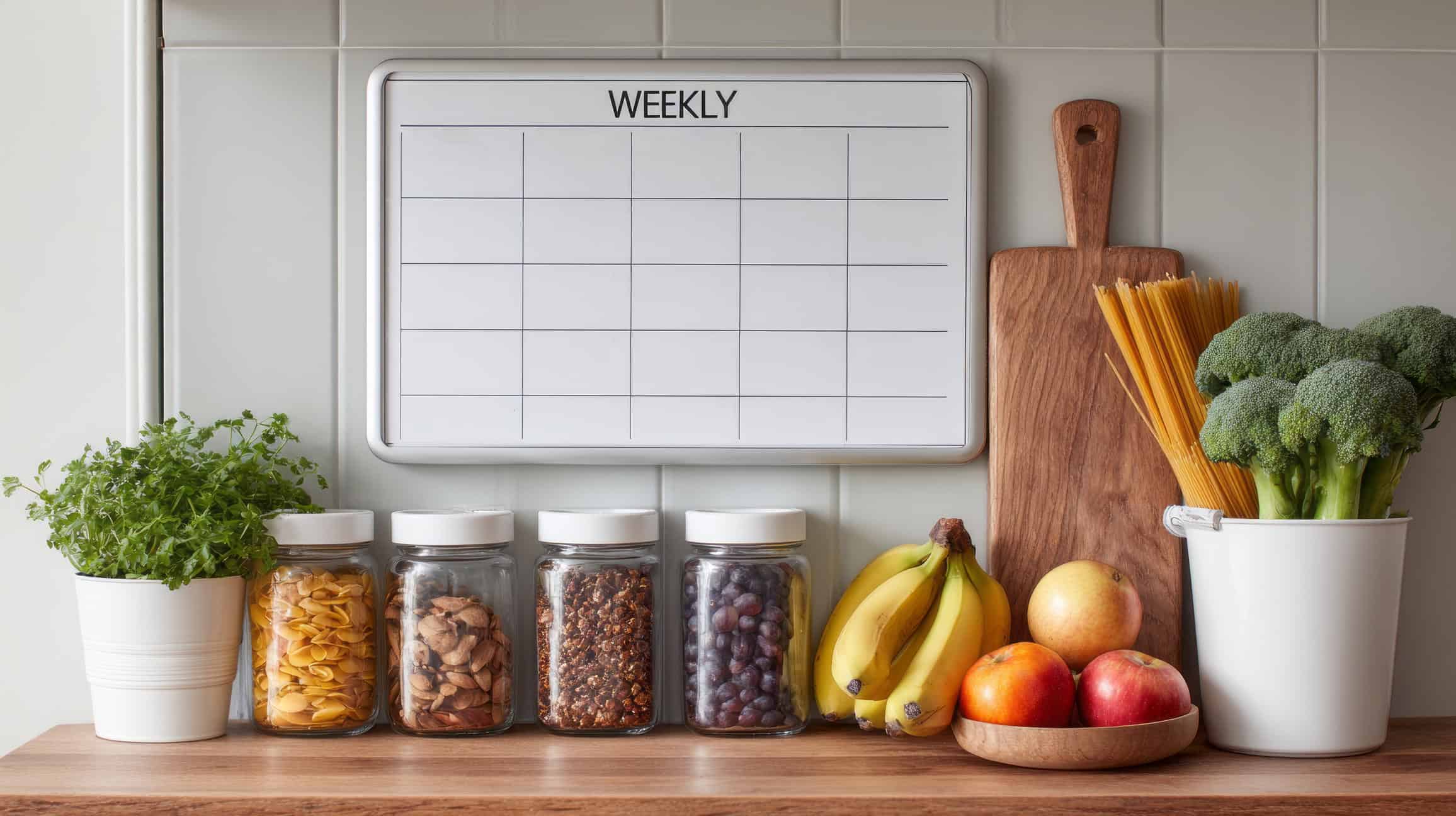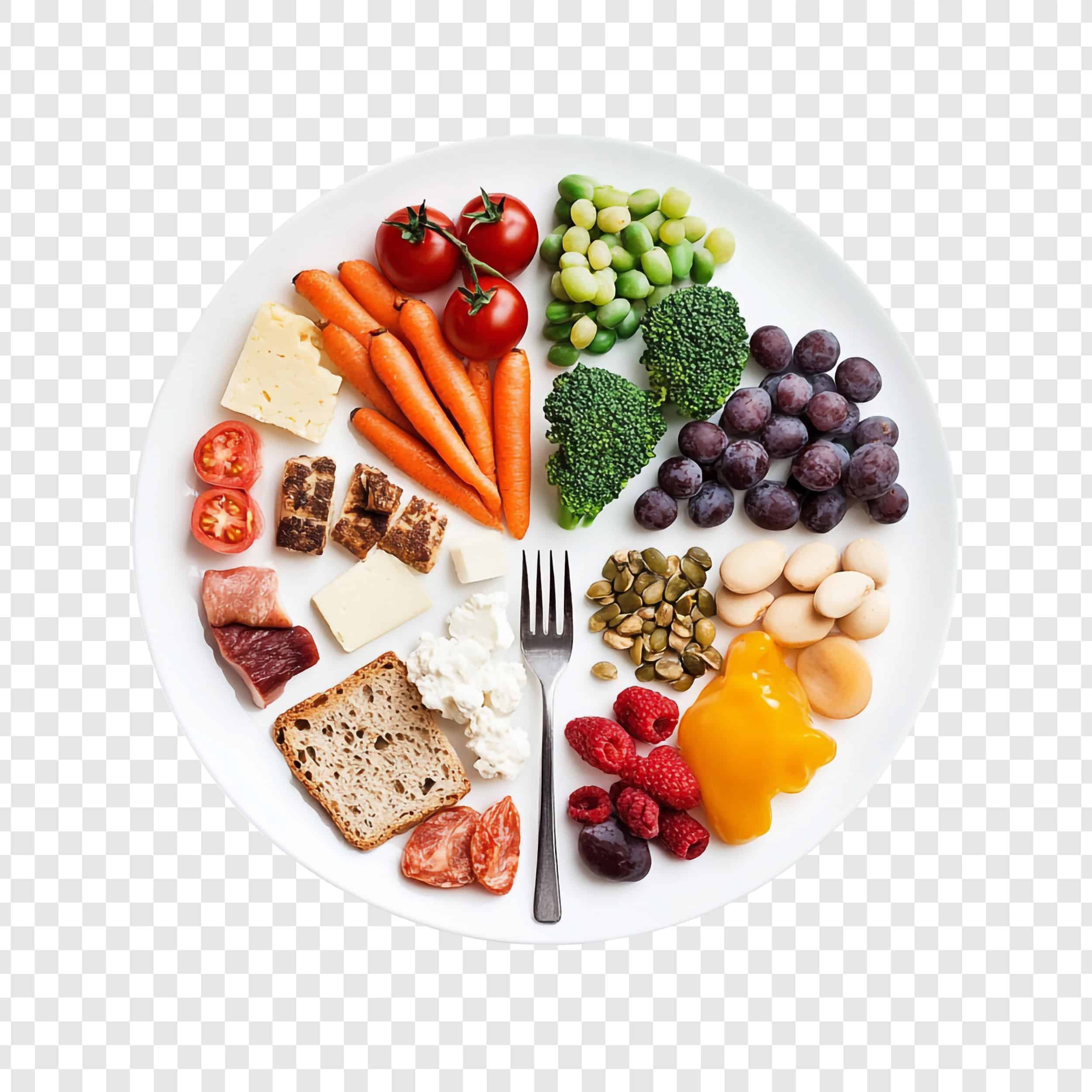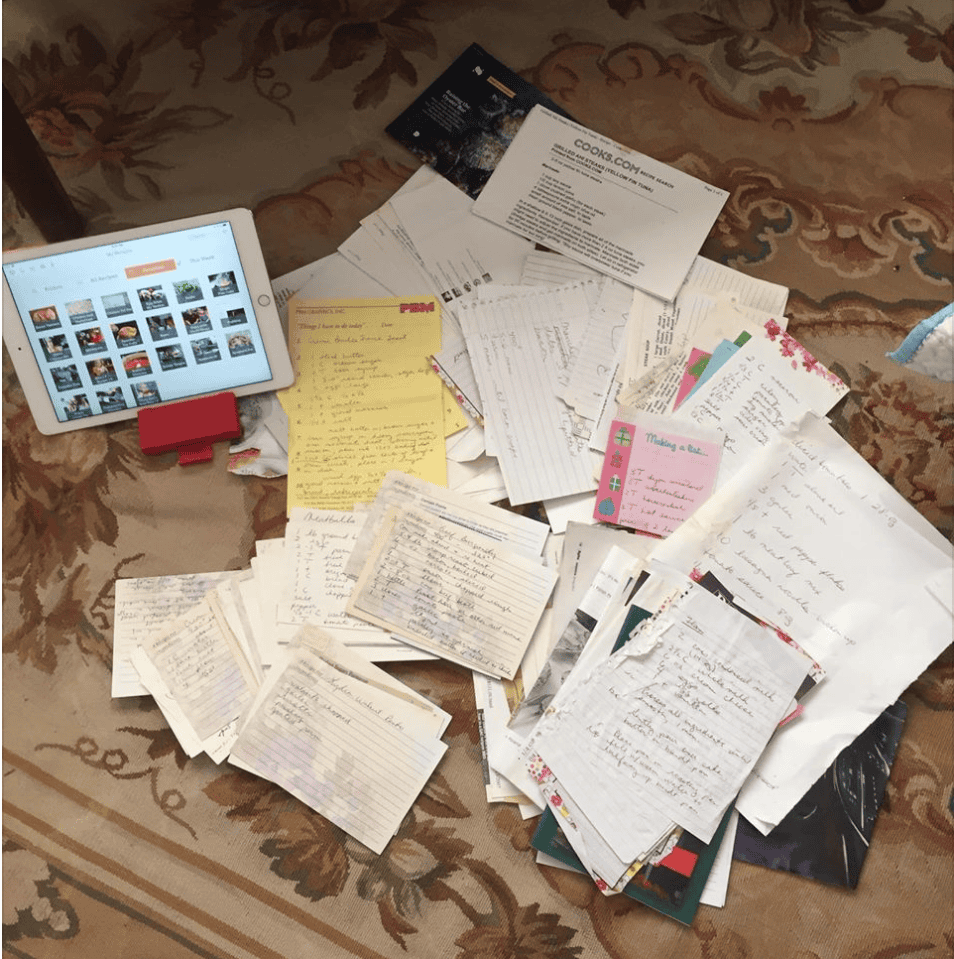Here’s my take on how to meal plan on a budget- You don’t do it because you are short on money. It’s deeper than that.
You see, the average American family of four throws out $1,600 a year in produce. But why so much waste? Most people don’t assess how much food they actually require, and end up buying more than they need.
Some is impulse buying and some is a lack of planning. The question, “What are we having for dinner?” is often answered with takeout food because you had not planned beforehand what to have that day, or more expensive last-minute grocery shopping. This leads to more groceries going bad in the house and more money out your pocket.
But there’s a simple solution for this, and that’s meal planning. Meal planning on a budget has all the mental advantages of meal planning with all the financial advantages of saving money. Imagine how good it would feel to already know what’s for dinner and lunch in the morning. Better yet, imagine not throwing away so much food stuff during spring cleaning, and eating takeout as seldom as possible.
If that sounds nice, here are my top tips on how to meal plan and prep on a budget.
1. Start with what you can and want to eat – not with what you can’t
When meal planning on a budget, there are plenty of tasty and affordable things accessible to you. Finding things you like and enjoy is essential to your plan to eat on a budget.
The biggest mistake I see people make is starting their budget meal planning by listing everything they think they can’t afford or shouldn’t eat. This creates a sense of deprivation before you even begin. Instead, focus on discovering delicious, affordable options that excite you.
Think about the meals you genuinely enjoy eating. Maybe it’s a hearty pasta dish, a warming bowl of chili, or a simple stir-fry. These comfort foods often use affordable, accessible ingredients and can be the foundation of your budget meal plan.
Here’s my take on how to meal plan on a budget- You don’t do it because you are short on money. It’s deeper than that.
2. Take inventory of what you have already
Nothing is more affordable than what we already own. Take a look at what’s in your fridge, freezer, and pantry and see how you can utilize it.
- You will avoid buying more of the things you already have
- Make a plan to cook with those items before they spoil.
I love making meals that specifically target those ingredients, and only shop for a few items needed in those recipes. It feels like a weekend science experiment.
Where do you find recipe ideas?
So glad you asked. There’s a reason these items are untouched. Many times we don’t know what to do with them or don’t like the ideas we aleady have.
to find fresh ideas to help your budget utilise AI tools like ChatGPT for recipe inspiration. Just ask, “I have XYZ and want to make lunch. Give me five simple ideas.” Once you find an idea you like, search the web [Google or your favorite social media] for a recipe. Or pop on OrganizEat to see what’s available.
My recipe organizing app OrganizEat has a feature where you can search recipes saved by the app’s users in the past, based on a combination of ingredients. For instance, you can search for recipes that include rice, onions, and beetroot to see what comes up. That way you can find recipes by ingredients and know they have already passed another set of eyes’ judgment.
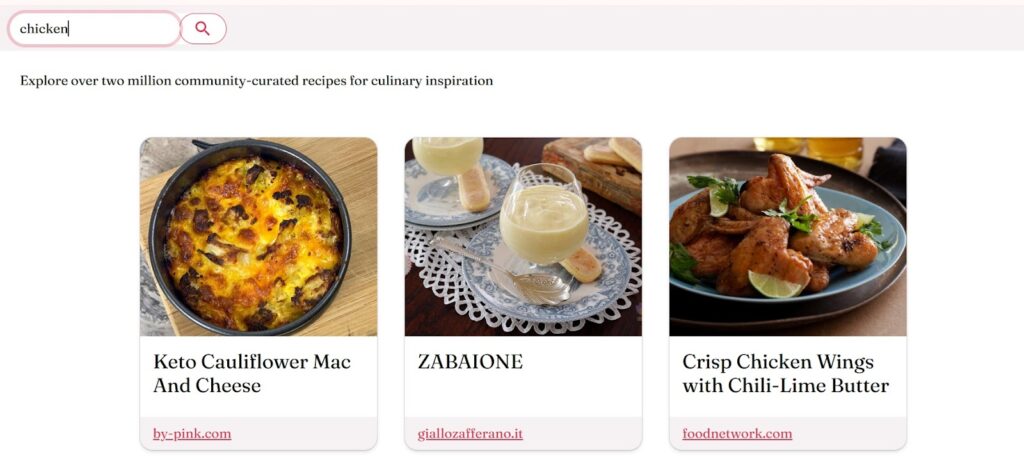
Not sure how to do it? Here’s a video to help you out:
Pro-tip: Once you find a reipce you liked on the web or social media, save the recipe in OrganizEat to use it again later.
3. Find recipes based on affordable ingredients
Focus on recipes that use pantry staples and common ingredients. Some healthy and affordable ideas are legumes, canned fish, rice, and seasonal fruits and veggies. Save them to OrganizEat for easy access later.
You can plan meals based on what’s on sale, or go hunting for the best deals and coupons. Not my style but it’s a common practice and it works dor many people. But It prevents some planning ahead because you cannot plan what’s on sale.
What I do when I want to save money a is to use common, affordable ingredients. For instance, you can plan to make plant-based meals 4 out of 7 days in the week. Legumes (beans, lentils, peas), tofu, canned fish, and rice are inexpensive ways to get protein and omega-3 compared to meat products.
I also go for canned or frozen choices like beans, meat, and tuna because they are cheaper than fresh ones. Foods in their basic form are also less expensive compared to their pre-washed, pre-cut, prepared alternatives. Buy vegetables in their original form and prepare them yourself at home.
However, in season fresh veggies and fruits tend to be more affordable than things that are out of season. It’s a simple mind shift that doesn’t require you scoping stores for best deals.
4. Create a meal plan for the week
We have already started creating a meal plan with the ingredients we have on hand, but that won’t be enough. My advice is to think of or write down 10-14 home-cooked meals that you enjoy eating often. Number that list because it’s a plan on what to eat every night for the next two weeks or so.
I say every night because we prefer to cook more than enough for supper, so there’s leftover for lunch the following day. This saves time, money, and brain power – nobody wants to think about what to make three times a day.
This meal plan will inform your next purchase and prevent impulse buying or buying ingredients you won’t use.
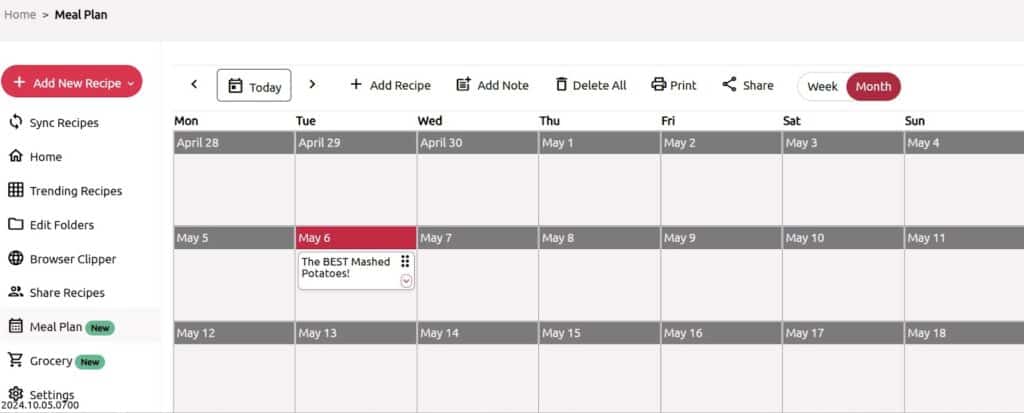
That said, recipe apps like OrganizEat come in handy to add variety and adventure to your meals.
Pro-tip: you can upload recipes from books, magazines, and family members to reduce paper clutter and mess and put all your recipes in one place.
That said, recipe apps like OrganizEat, AI tools, and recipes from books, magazines, and family can also come in handy to add variety and adventure to your meals. I suggest trying a new recipe that tickles your fancy every week when you have time. And if it ticks all the right boxes, save the recipe in OrganizEat to use it again later. You can even mark it as “cooked” on the app to remind yourself that this one is tested and approved by your family.
Plan extras
I already mentioned that we cook extra at dinner so we can have the leftovers for lunch the next day. Another helpful tip is to batch-cook enough food for two different meals at once. For example, if you buy a lot of chicken on sale, cook all of it. Save some for another meal and only eat what you need that day. Get ideas on what to do with the leftover chicken on OrganizEat.
Utilize leftovers
My mom used to mix all the leftovers on Saturday during lunch and call it lasagna. I would hope we are more creative than this, but leftovers are a great way to save time and money. Go through the fridge and see what you can make with the leftovers from the previous week before planning for the following week.
5. Make a shopping list and stick to it
Based on that meal plan, create a shopping list with all the things you need to buy. OrganizEat can turn your recipes into a grocery list within seconds, then you can add other items like toilet paper, cleaning products, and household staples that run out fast (milk, bread, eggs, sugar).
I don’t include breakfast in my meal planning since everyone in my house eats whatever they feel like in the morning. Instead, we keep the kitchen stocked with breakfast basics like oats, cereal, eggs, and coffee. A small whiteboard in the kitchen helps us track what’s running low.
The key is sticking to your list. The purpose is to buy everything you need while preventing impulse purchases. What’s helped me most is carrying cash instead of a card. Don’t be tempted to buy items just because they’re on sale if they’re not on your menu – the chances of them being used are limited.
Based on that meal plan, create a shopping list with all the things you need to buy. Of course, you can do this manually, but the OrganizEat recipe app makes this part so much easier.
Read more: how to grocery shopping for a family on a budget
Buy in Bulk
Buying in bulk is a fantastic money-saving tip when meal planning. The idea is to buy a lot of non-perishable goods like rice, spaghetti, legumes, and meat to freeze, especially if these items are on sale.
And if you look at your weekly menu and notice you require a lot of ingredients, let’s say milk or bread, feel free to buy it in bulk just that once, as it will be fully utilized.
6. Prepare and Pre-cook
This last tip has been a game-changer for us. While having a weekly menu on the fridge door and all ingredients in the house helps a lot, sometimes one is too tired after work to prepare a meal from scratch.
Preparing and pre-cooking some stuff over the weekend solves this problem.
Here’s what we do:
- Wash and chop vegetables like carrots, and blend a big batch of tomatoes to use throughout the week.
- Pre-cook legumes, meat, and prepare broth. Freeze if need be.
- Make dessert. We make pie and cake, and have ice cream ready on hand.
Sometimes I go ahead and fully prepare the stews we will have for the week and store them in fridge containers ready to go. Lasagna also keeps very well in the fridge, and you can make more than enough. This makes dinner and lunch very easy because you just pull out a container and heat the food on medium heat.
How OrganizEat Saves You Money
I know what you’re thinking – “But Rachel, the OrganizEat app is not free, so how does it save me money?”
This is one of the most common objections I hear, and I completely understand it. Here’s the thing though: by planning your cooking and being more efficient with it, cooking at home more, eating out less, and reducing food waste, you actually save much more money than the $3.33 per month the app costs.
Let me put this in perspective. If you cooked at home even just once a month instead of eating out, your subscription would pay for itself multiple times over. The average takeout meal costs $15-25, while a home-cooked meal might cost $3-7 per serving.
But the real savings come from:
- Reducing food waste: No more throwing away $1,600 worth of produce annually
- Preventing impulse purchases: Having a clear shopping list keeps you focused
- Efficient meal planning: Using what you have and buying only what you need
- Recipe organization: Never losing track of affordable recipes that work for your family
The app essentially turns your smartphone into a money-saving tool that pays for itself every single month.
Optimize and Track what Works Best For You
The thing about meal planning is that you won’t get everything right from the word go. It’s a trial-and-error thing where you learn about your family habits, what they like, and what works.
OrganizEat has been a game changer with this. Besides saving and organizing all my recipes, I also keep track of the recipes we like most and then use that to meal plan and grocery list. You can mark a recipe as cooked and loved for easier tracking.
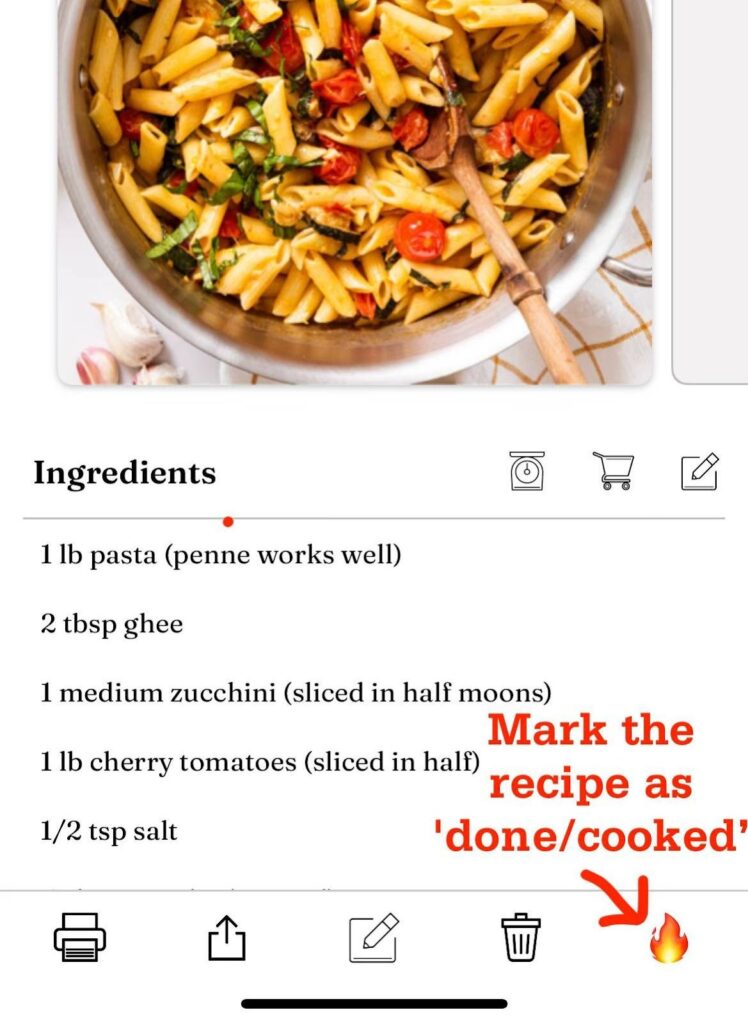
How to Meal Plan and Prep on a Budget FAQ
Create a detailed shopping list based on your meal plan and stick to it religiously. Focus on pantry staples like rice, legumes, and seasonal produce. Buy non-perishables in bulk when possible, choose basic forms of ingredients over pre-prepared options, and consider carrying cash instead of cards to avoid impulse purchases.
Meal planning for one can be both affordable and efficient if you focus on flexible ingredients and minimize waste. Stick to a small grocery list with versatile staples like rice, eggs, canned beans, and frozen vegetables. Cook in batches and freeze leftovers in single portions for later.
Meal planning with dietary restrictions (like gluten-free, vegetarian, or dairy-free) is possible on a budget—you just need to be strategic. Focus on whole, natural foods like legumes, grains (like rice or quinoa), fruits, and vegetables. Prepping meals at home will also help keep costs down without compromising your dietary needs.




